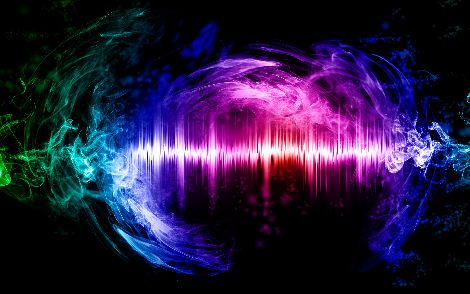Exploring Sound Therapy
Exploring Sound Therapy: A Journey of Healing and Harmony
Introduction
Sound therapy is a
captivating and powerful healing modality that harnesses the vibrational energy
of sound to promote holistic well-being.
This ancient practice has gained
recognition in recent years for its ability to restore balance, reduce stress,
and enhance overall health.
In this article, we will delve into the essence of
sound therapy, including the concept of sympathetic resonance, and explore the
diverse career opportunities available for sound therapists.


Understanding Sound Therapy
At its core, sound
therapy is based on the principle of sympathetic resonance.
Just as a tuning
fork can cause another nearby tuning fork to vibrate in harmony, our bodies,
composed of various frequencies, respond to external sound vibrations.
Through
carefully selected instruments like singing bowls, gongs, or tuning forks,
sound therapists create soundscapes that facilitate deep relaxation and
therapeutic effects.
The process
involves immersing oneself in the gentle yet powerful vibrations which
resonate with our cells, organs, and energy centers. This resonance helps
release energetic blockages, reducing stress, anxiety, and tension.
Sound
therapy can also enhance mental clarity, foster emotional healing, and promote
a profound sense of inner peace.
Sound Frequencies
Sound therapy involves the therapeutic application of sound frequencies to the physical body and energy field of an individual, with the purpose of achieving balance, harmony, and overall well-being. The term "harmony" refers to the congruity of different elements within oneself and with the whole, while "health" signifies a state of robust physical and mental vitality devoid of disease.
While the utilization of sound for healing has ancient roots and is prevalent in numerous spiritual and sacred traditions, it represents a relatively recent addition to the repertoire of modern complementary healing practices.
Our body and its various components function as a magnificent orchestra, producing a harmonious symphony when in a state of balance and good health. However, when one player within the orchestra begins to play discordant notes with incorrect timing, the entire ensemble is affected. Similarly, when a part of our body is out of harmony with the rest, it disrupts the overall equilibrium.
Albert Einstein's insights revealed that everything in the world is a manifestation of energy, and we continuously emit energy into our surroundings.
When we encounter negative or traumatic experiences in our daily lives, our energy system, known as the human energy field (HEF), becomes disrupted. Consequently, these disruptions impede the flow of life energy (Chi/Qi/prana), essential for optimal health and well-being. If left unaddressed, these energy blocks gradually lead to physical and emotional imbalances, further disrupting our daily lives.
Sound frequencies, being a form of energy, effortlessly traverse through fluids. Given that the human body comprises at least 70% water, sound waves easily penetrate the human energy field, clearing energetic blockages that hinder health and well-being.


It all comes down to Cymatics
Cymatics explores the visible manifestations of sound vibrations, unveiling the profound relationship between sound and matter.
By combining the realms of sound, geometry, light, and mathematics, it unveils a captivating tapestry of images generated by diverse frequencies present within our bodies, nature, and even the cosmos.
Despite sound being imperceptible and intangible, it possesses the remarkable power to guide and shape our world.
In the realm of digital representation, we can visualize sound as 2D waveforms. However, the science of Cymatics offers us a broader perspective, revolutionizing our comprehension of how sound profoundly impacts every aspect of our existence.
Cymatics unequivocally demonstrates that objects we perceive as solid, unyielding entities—including our own bodies—are continuously in a state of vibration, each with its unique frequency.
Career
Opportunities in Sound Therapy
Sound therapy
offers a diverse range of career paths for those passionate about using sound
as a therapeutic tool. Here are a few examples:
Sound
Therapist/Practitioner: As a sound therapist, you can offer individual
sessions, sound baths, or group workshops to help clients find relaxation,
balance, and inner harmony. Your role involves creating and facilitating sound
experiences that cater to the specific needs of each individual or group.
Holistic Wellness
Centers: Many holistic wellness centers incorporate sound therapy as part of
their offerings. By joining such centers, you can collaborate with other
practitioners, offering sound healing sessions alongside other holistic
therapies like meditation, yoga, or energy work.
Spas and Wellness
Resorts: Luxurious spas and wellness resorts often integrate sound therapy as a
pampering and rejuvenating experience for their guests. Working in such
settings allows you to create immersive sound journeys, enhancing the overall
relaxation and wellness experience for visitors.
Educational Institutions: Sound therapists can share their knowledge and expertise by teaching sound therapy courses or workshops at wellness centers, schools, or holistic healing institutes. By becoming an educator, you can inspire and empower aspiring sound therapists.
Educational Institutions: Sound therapists can share their knowledge and expertise by teaching sound therapy courses or workshops at wellness centers, schools, or holistic healing institutes. By becoming an educator, you can inspire and empower aspiring sound therapists.
Professional training in Masters Level Sound Therapy can provide a complete career path or be combined with other holistic modalities.


Healing with Sound Therapy
Sound therapy can be used as a complementary approach to support overall health and well-being. While it is an emerging science, sound therapy is now widely used in both complementary and allopathic medicine.
An advantage of Sound Therapy is that the client does not need to do anything other than be present in the treatment, making it more appealing and achievable for many people.
Here is a list of some diseases and issues where sound therapy has shown benefits:
Stress and Anxiety: Sound therapy can induce a state of deep relaxation, reduce stress levels, and alleviate symptoms of anxiety. As stress is a major precursor to many serious diseases, this alone is a significant benefit.
Stress and Anxiety: Sound therapy can induce a state of deep relaxation, reduce stress levels, and alleviate symptoms of anxiety. As stress is a major precursor to many serious diseases, this alone is a significant benefit.
Sleep Disorders: The soothing sounds used in sound therapy can help calm the mind, promoting better sleep quality and relieving insomnia.
Chronic Pain: Sound therapy may help manage chronic pain by promoting relaxation, reducing muscle tension, and providing a distraction from discomfort.
Depression: Sound therapy has shown potential in enhancing mood, alleviating symptoms of depression, and supporting emotional well-being.
PTSD (Post-Traumatic Stress Disorder): Sound therapy techniques, such as guided meditation with sound, may help individuals with PTSD manage their symptoms, promote relaxation, and improve overall emotional balance.
Chronic Pain: Sound therapy may help manage chronic pain by promoting relaxation, reducing muscle tension, and providing a distraction from discomfort.
Depression: Sound therapy has shown potential in enhancing mood, alleviating symptoms of depression, and supporting emotional well-being.
PTSD (Post-Traumatic Stress Disorder): Sound therapy techniques, such as guided meditation with sound, may help individuals with PTSD manage their symptoms, promote relaxation, and improve overall emotional balance.
Cognitive Function: Certain sound frequencies and techniques have been explored for their potential to enhance cognitive function, including memory, focus, and attention.
Immune System Support: Sound therapy may have positive effects on the immune system by reducing stress and promoting relaxation, which can enhance overall immune function.
Energy Imbalances: Sound therapy can work on a subtle level to rebalance the body's energy centers, supporting the flow of vital life force energy and promoting a sense of vitality and well-being.
Emotional Healing: The vibrational qualities of sound can facilitate emotional release, aid in processing emotions, and support healing from past traumas or emotional challenges.
Overall Well-being and Relaxation: Sound therapy sessions can provide a space for deep relaxation, rejuvenation, and a sense of inner peace, promoting overall well-being and stress reduction.
Sound Therapy and Allopathic Medicine
Sound and vibration are utilized in various ways within allopathic medicine and surgery for diagnostic, therapeutic, and procedural purposes.
Here are some examples of how sound and vibration are employed in the field:
Here are some examples of how sound and vibration are employed in the field:
Ultrasound Imaging: Ultrasound technology uses sound waves to create images of internal organs, tissues, and blood vessels. It is commonly used in obstetrics, cardiology, and many other medical specialties for diagnostic purposes.
Doppler Ultrasound: Doppler ultrasound measures and evaluates the movement of blood through blood vessels. It helps assess blood flow, detect blockages, and diagnose conditions such as deep vein thrombosis and arterial diseases.
Sonography: Sound waves are utilized in medical sonography to create real-time images of organs, muscles, tendons, and other structures. This technique aids in diagnosing various conditions and guiding medical interventions.
Lithotripsy: Lithotripsy is a non-invasive procedure that uses high-intensity sound waves to break down kidney stones or gallstones, allowing them to pass through the urinary or biliary system.
Bone Conduction Hearing Aids: These hearing aids use vibrations transmitted through the bones of the skull to bypass damaged outer or middle ear structures and stimulate the inner ear, facilitating hearing for individuals with certain types of hearing loss.
Vibrational Therapy: Vibrational therapy, such as whole-body vibration, is sometimes used to improve muscle strength, balance, and bone density in certain medical conditions. It involves standing, sitting, or lying on a vibrating platform that generates rhythmic vibrations.
Tissue Ablation: High-frequency sound waves or focused ultrasound can be used to precisely destroy targeted tissues, such as tumors or uterine fibroids, without the need for incisions. This technique, known as high-intensity focused ultrasound (HIFU), offers a non-invasive or minimally invasive alternative to traditional surgical methods.
You see! Allopathic medicine is already using sound therapy to treat tumors!
Surgical Tools: Surgical instruments, such as ultrasonic scalpels and bone saws, utilize ultrasonic vibrations for precise cutting, coagulation, and removal of tissues during surgical procedures.
These examples highlight the diverse applications of sound and vibration in allopathic medicine and surgery. Sound and vibration-based technologies continue to advance, offering innovative approaches for diagnostics, therapies, and surgical interventions.


Train now to become a Master Practitioner of Sound Therapy
This professional-level practitioner training program is offered through a 14-day intensive residential training retreat in India.
